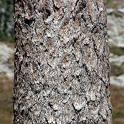Tamarack Tree Information
Images of Tamarack:






Tamarack grows in the following 5 states and provinces:
Alberta, British Columbia, Idaho, Montana, WashingtonInformation about Tamarack:
The Larix Lyallii is commonly known as the Alpine Larch, Lyall Larch, Lyall's Larch, Subalpine Larch, Tamarack, Timberline Larch as well as Woolly Larch.
The currently accepted scientific name of alpine larch is Larix lyallii Parl . There are no recognized subspecies, varieties, or forms of alpine larch. Hybridization with western larch (Larix occidentalis) results in a genetically different tree . Although these hybrids occupy a similar geographic area, they inhabit different altitudinal zones, separated from each other by 500 to 1,000 feet (150-300 m) . Differentiation between alpine larch and hybrids can be determined by analyzing the foliar terpenes and volatiles .Alpine larch occupies two mountain systems: the northern Rockies and northern Cascades . It can be found on high mountains in southern British Columbia and Alberta, north-central Washington, north-central and east-central Idaho, and western Montana . Alpine larch exhibits a highly discontinuous distribution, which is believed to be a remnant of a continuous range existing at a time when cooler, more extensive timberline habitat existed . Typical alpine larch stands are often isolated pockets of open, parklike groves, less than 0.05 acre (0.2 ha) .Alpine larch is a dominant species occupying the timberline habitat type within the subalpine fir (Abies lasiocarpa) series . Principal associates include whitebark pine (Pinus albicaulis), subalpine fir, and Engelmann spruce (Picea engelmannii) . Major undergrowth species include mountain-heather (Phyllodoce empetriformis), smooth woodrush (Luzula hitchcockii), and grouse whortleberry (Vaccinium scoparium) . See successional status for more information. Publications listing alpine larch as an indicator or dominant species in habitat types (hts), community types (cts), or vegetation types (vts) are listed below: Area Classification Authority MT forest hts Pfister & others 1977 n ID general veg. cts Cooper & others 1991 s AB general veg. vts Holland & others 1982Some of the information provided here is attributed to:Habeck, R. J. 1991. Larix lyallii. In: Fire Effects Information System, [Online]. U.S. Department of Agriculture, Forest Service, Rocky Mountain Research Station, Fire Sciences Laboratory (Producer). , available at the USDA Fire Effects Information System (FEIS) website